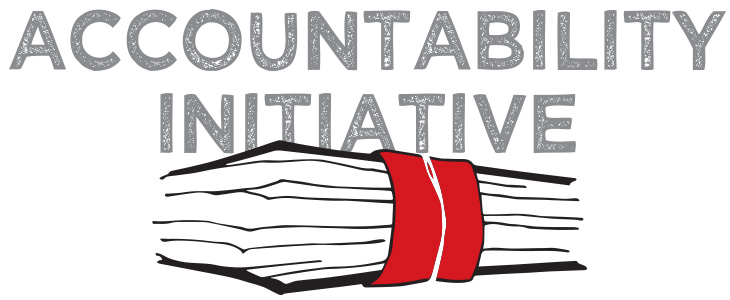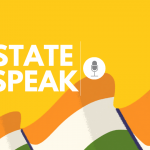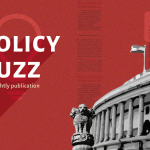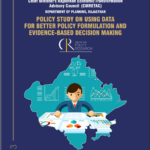
From Consultation to Active Policy Making – Lessons from the Jan Lokpal revolution.
18 April 2011
Engaging citizens in policy-making is a sound investment and a core element of good governance. It allows governments to tap wider sources of information, perspectives and potential solutions, and improves the quality of the decisions reached. Equally important, it contributes to building public trust in government, raising the quality of democracy and strengthening capacity. [i]
In the absence of avenues of participation, citizens rightfully take up means to get their voice across to government. This might sometimes lead to adoption of extra-constitutional methods which might be termed blackmailing. This is what was seen in the Jan Lokpal Issue.
Two major lessons have emerged from Lok Janpal revolution – one good, and one bad. The good news is that citizens in India are ready to participate in the framing of laws. Civil society (particularly the middle class) seems to have “re”cognized its power on governance. The bad news is that to most people, the only visible and effective avenue of participation seems to be extra-constitutional. Though the Government of India has always provided avenues for public consultation, people have not taken to it or do not consider it effective. [To understand the various ways in which the Government of India allows citizens to engage with policy-makers, please see this PRS blog.] And so now, people have started clamoring for a new level of participation in framing of laws – which is active participation.
3 levels of citizen participation
OECD has identified 3 levels of citizen participation – Information, Consultation and Active Participation.

Information Consultation Active participation
Figure : Courtesy OECD
The first level of citizen participation : Information
The first is when the government provides enough information for people to make informed decisions. This level does not allow for feedback or active participation and is the level at which the Right-To-Information act works. The demands of the people reach the government through media and pressure groups.
The second level of citizen participation : Consultation
The second level is that of consultation. Consultation is seen as a two-way relationship in which citizens provide feedback to the government. It is based on the prior definition by government of the issue on which citizens views are being sought and requires the provision of information. Governments define the issue, set the questions (or ask for comments) and manage the process, while citizens are invited to contribute their views and opinions.
A few problems with consultation :
- Firstly, consultation avenues , especially in India, are usually unknown to the general public.
- Secondly, having set the terms of consultation, the process does not allow for widening the debate. To take a simple example – a consultation question might be “How to increase the enrollment levels in school?” However, this might be just a subset of the larger question of “How to ensure the quality of education for every child in India?” A consultative process does not allow for such a move in the discourse. If on the other hand, this were a natural conversation between the people and the government on an equal footing, then this move in discourse would have been captured, and probably the priorities of the bill changed. Thus a fixed consultation usually does not allow for an in-depth exploration of the issue so as to allow the power of a discourse to decide the priorities.
- Thirdly, most opinions seem to come from single-issue advocates, and so have an activist-bias. This leads people to discredit it. This lack of buy-in by all stakeholders affects the final implementation of the policy.
- Fourthly, outsiders involved in policy are usually allowed to make only spasmodic or single issue inputs but are not required to sustain their interaction, confront trade-offs or to meet the objections of other outsiders with opposite views.
Third level of citizen Participation: Active Participation
Active participation is regarded as a relation based on partnership with the government, in which citizens actively engage in defining the process and content of policy-making. It acknowledges equal standing for citizens in defining the agenda, proposing policy options and shaping the policy dialogue. And most importantly, it emphasizes collaborative setting of priorities and agendas.
“Active Participation” to tame the wickedness of policy making
Policy making is a wicked problem. To see why it is so, please check this brief by the Australian Public service commission.
It’s in the DNA of wicked problems, that they can only be solved by active collaboration and shared understanding between all participants.So an active, collaborative partnership is not only desirable (as shown by the clamor for public participation in the framing of the Lokpal Bill), but is probably the only way in which the wickedness of public policy can be tamed. A collaborative model of policy-making between the government and the citizens would ensure that better decisions are taken and that there is a sense of ownership in the people, leading to better implementation.
Now that this blog post has introduced the concept of active participation, the next blog post would talk about various avenues of “Active Participation” that has been created in various countries. The blog post after that would talk about how technology can aid in “Active Participation”
[i] Citizens as partners (OECD publishing, 2001), http://books.google.co.in/books?id=XFZxZG-yupsC&printsec=frontcover#v=onepage&q&f=false.





